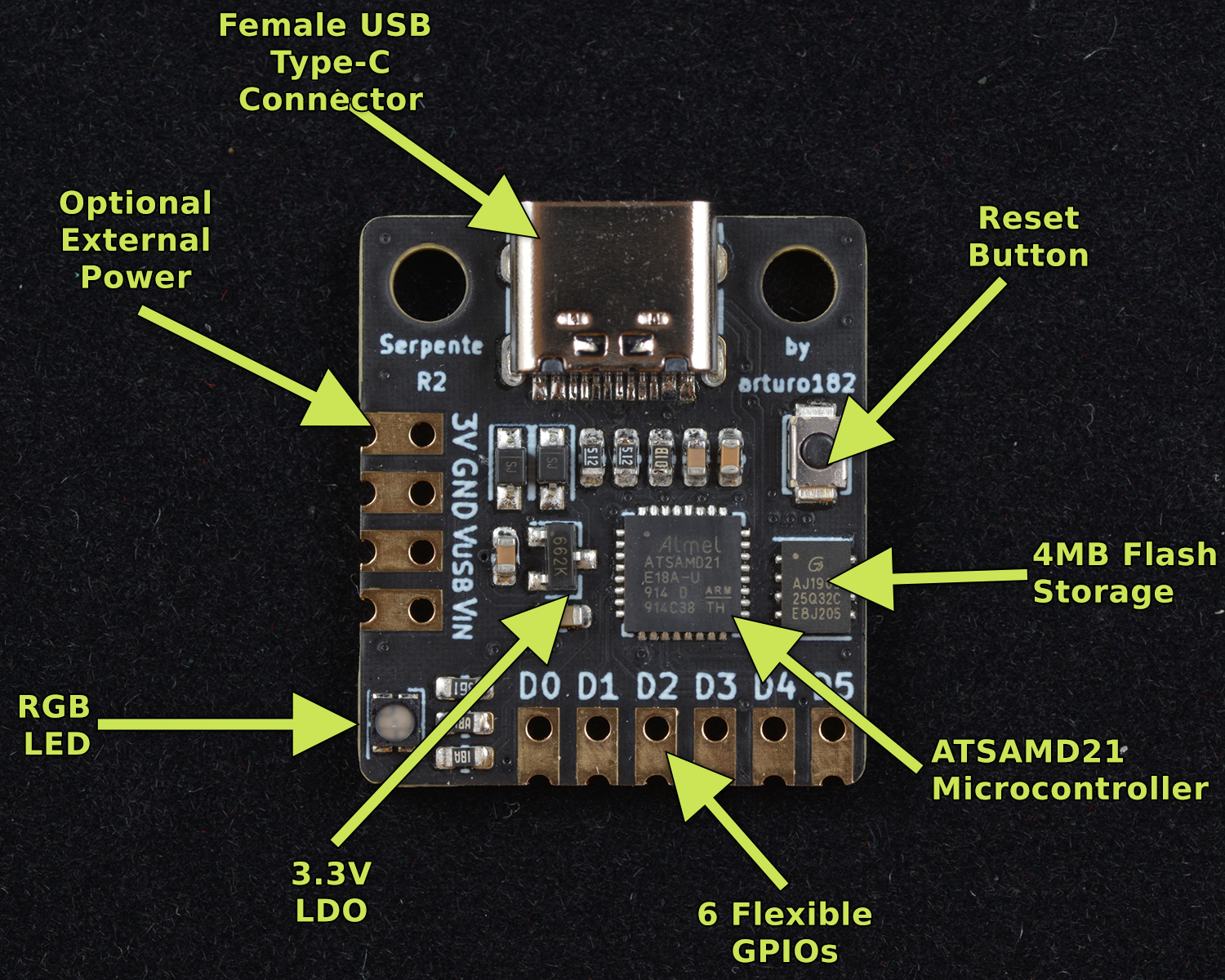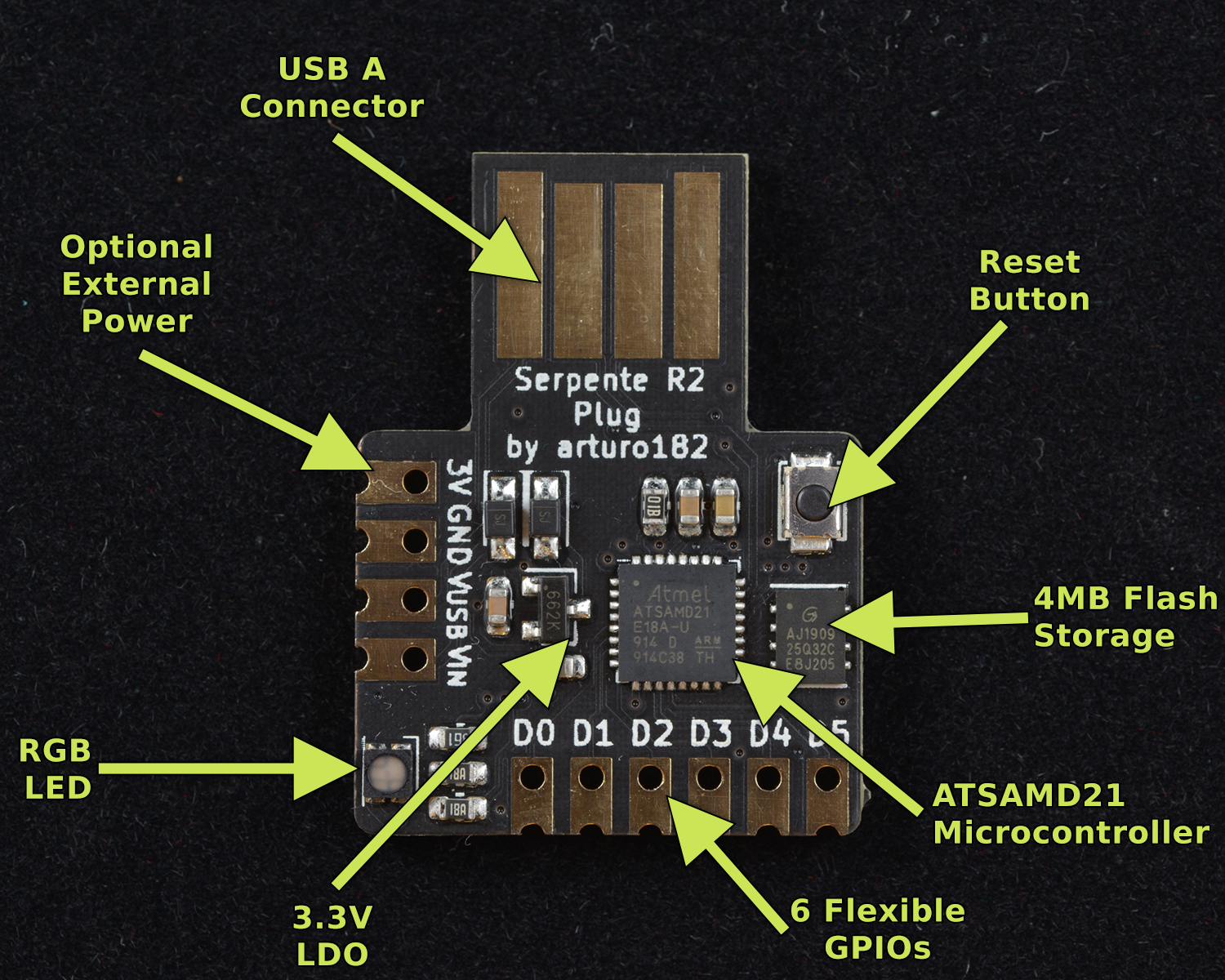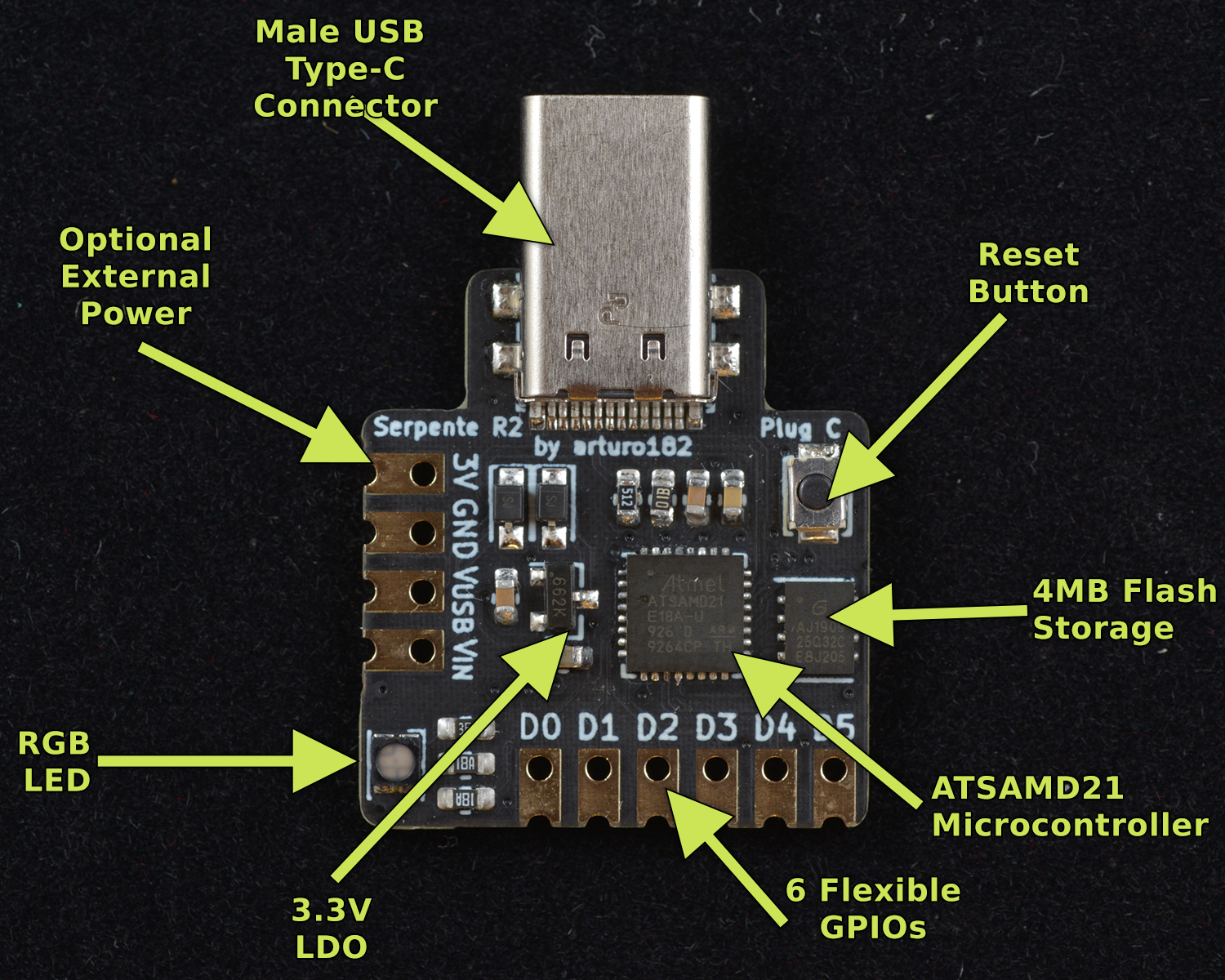Guided Tour
Let’s have a quick look at the boards and what’s on them. All three boards have the same components except the USB connectors.
- USB A, male or female USB Type-C Connector - Three options to choose from, use the one that works best for you! USB is used for both data and power. The Type-C connectors supports only USB 2.0 signals and is hardwired to be a Sink only.
- Reset Button - Allows you to reset the board quickly and if you double press it, the board boots into the bootloader.
- 4MB Flash Storage - All 4MB of the storage are available to you, you can store your CircuitPython files as well as logs, images and more! When connected to a PC, the flash storage shows up as a disk drive.
- ATSAMD21 Microcontroller - Cortex-M0+ running at 48MHz, not the fastest thing around, but fast enough for prototyping and simple applications.
- 6 Flexible GPIOs - All 6 GPIOs can be used as analog inputs, PWM outputs or regular digital IOs. You can also configure them to be SPI, I2C and/or UART. See Pinout and GPIO Configurations for more details.
- 3.3V LDO - The LDO provides up to 250mA of current for you.
- RGB LED - Each color is user-controllable with a possibility to PWM the colors.
- Optional External Power - If you don’t want to use the USB to power the board, connect an external source (max 6V) to the
VINpin and you’re ready to go! - Mount holes (female Type-C only) - We used the extra space to provide you with two mounting holes in case you want to make sure your Serpente stays in place.
- Breadboardable - The spacing of the headers allows you to use the boards with a breadboard, both as GPIO and power!
- Castellated edges - You can easily use the Serpente boards as CircuitPython modules.
Last modified August 5, 2024


